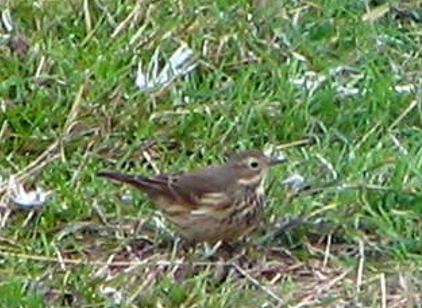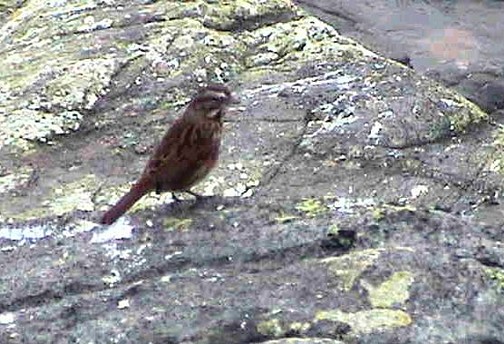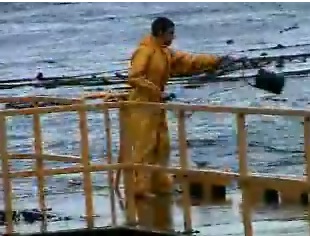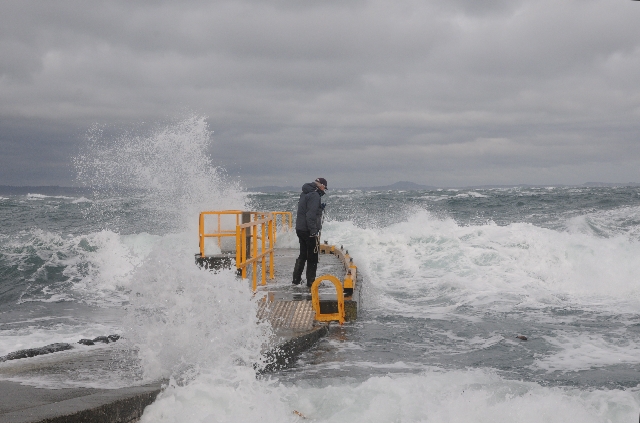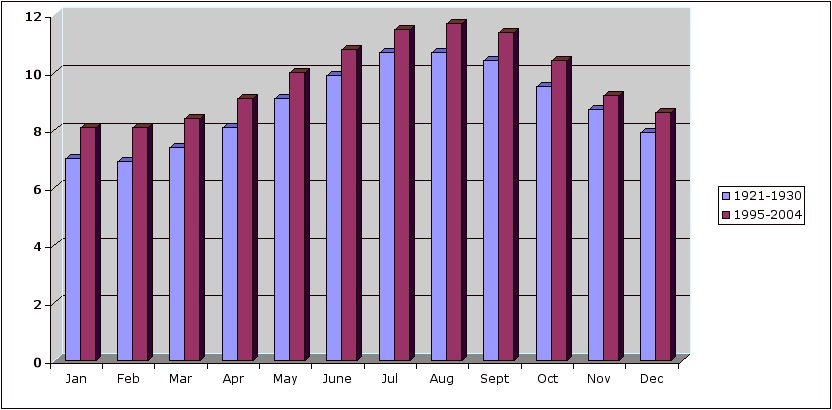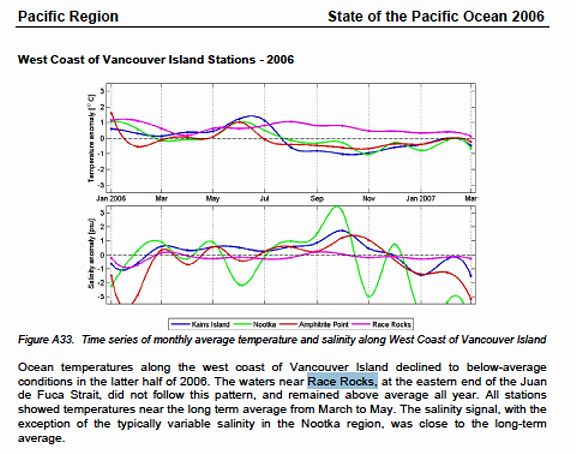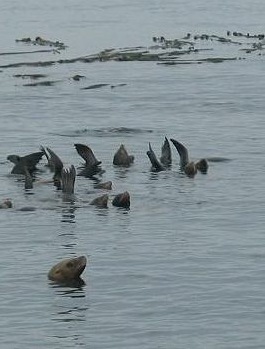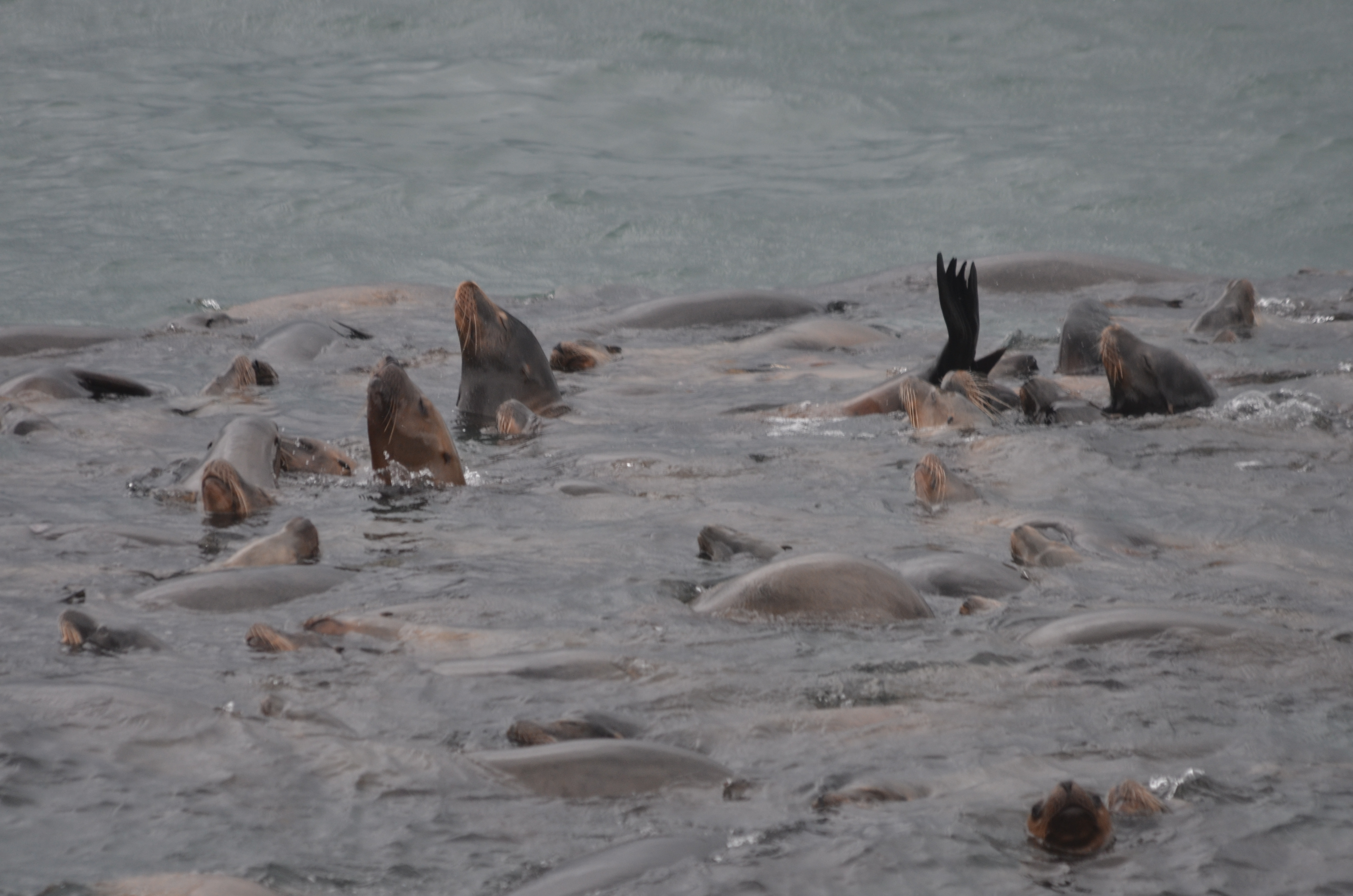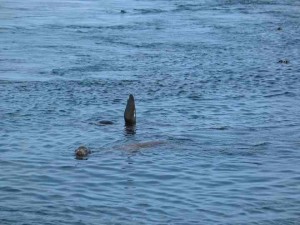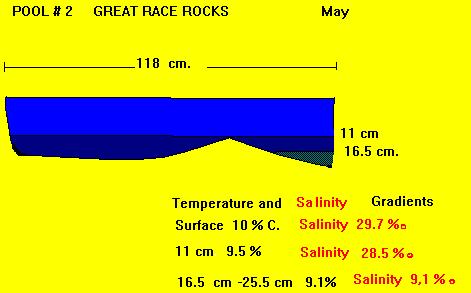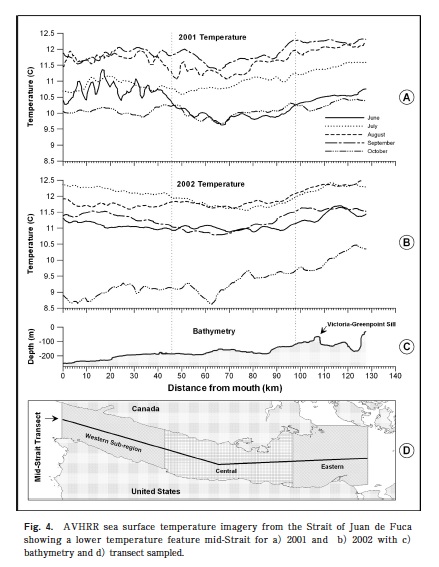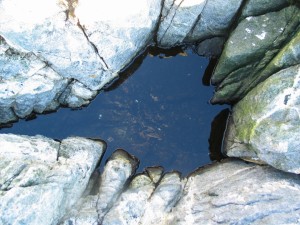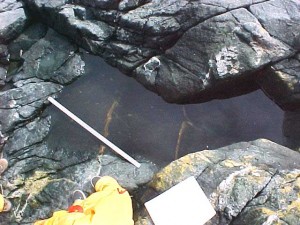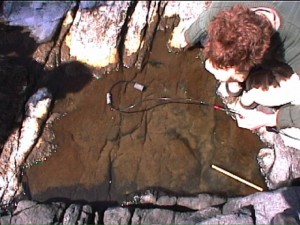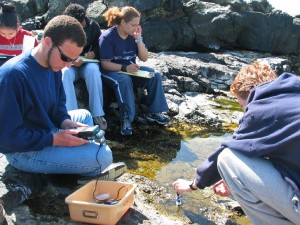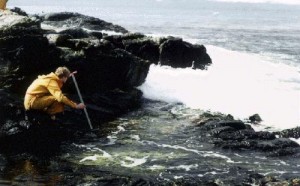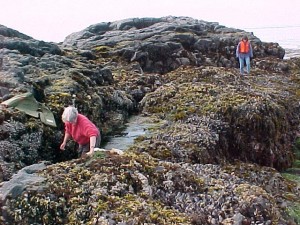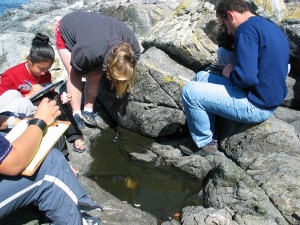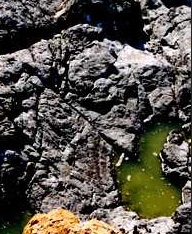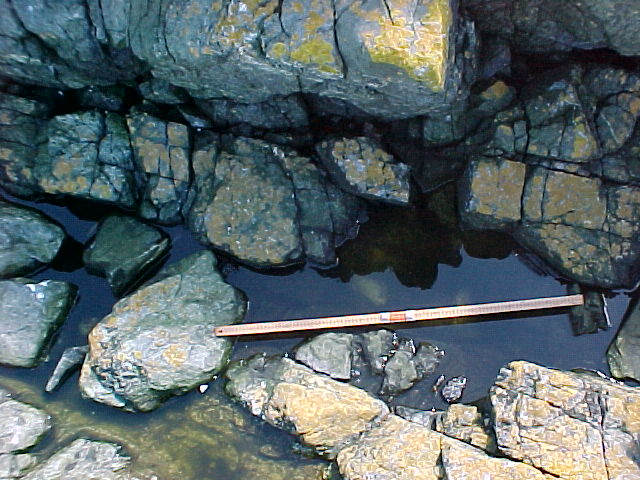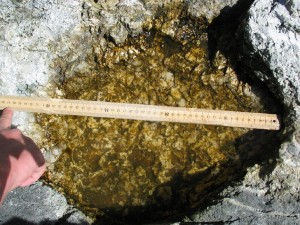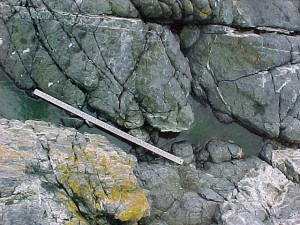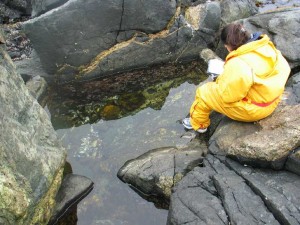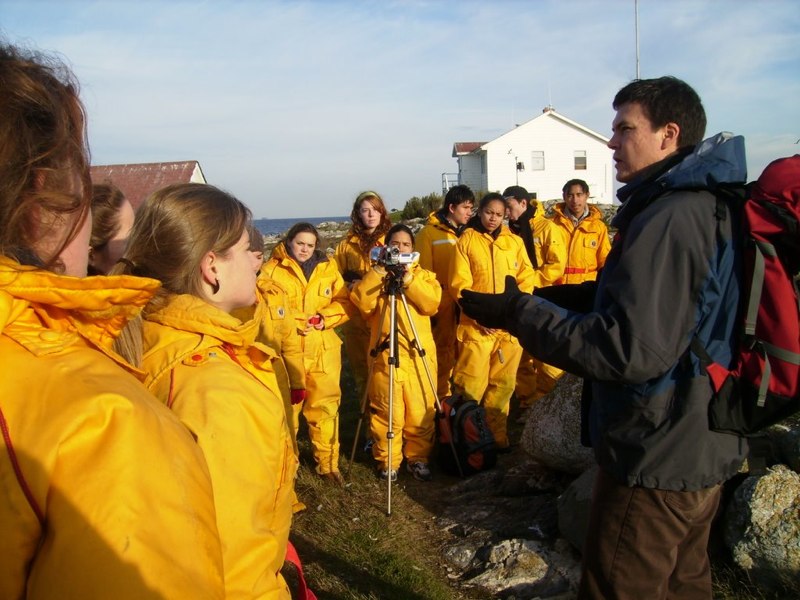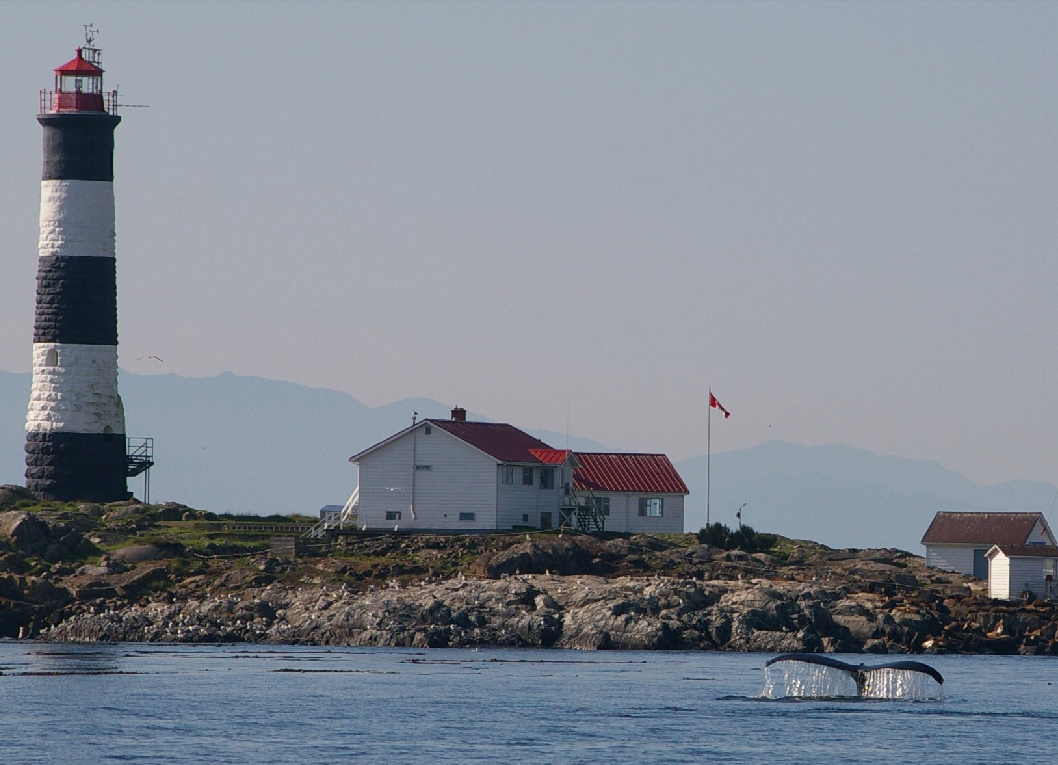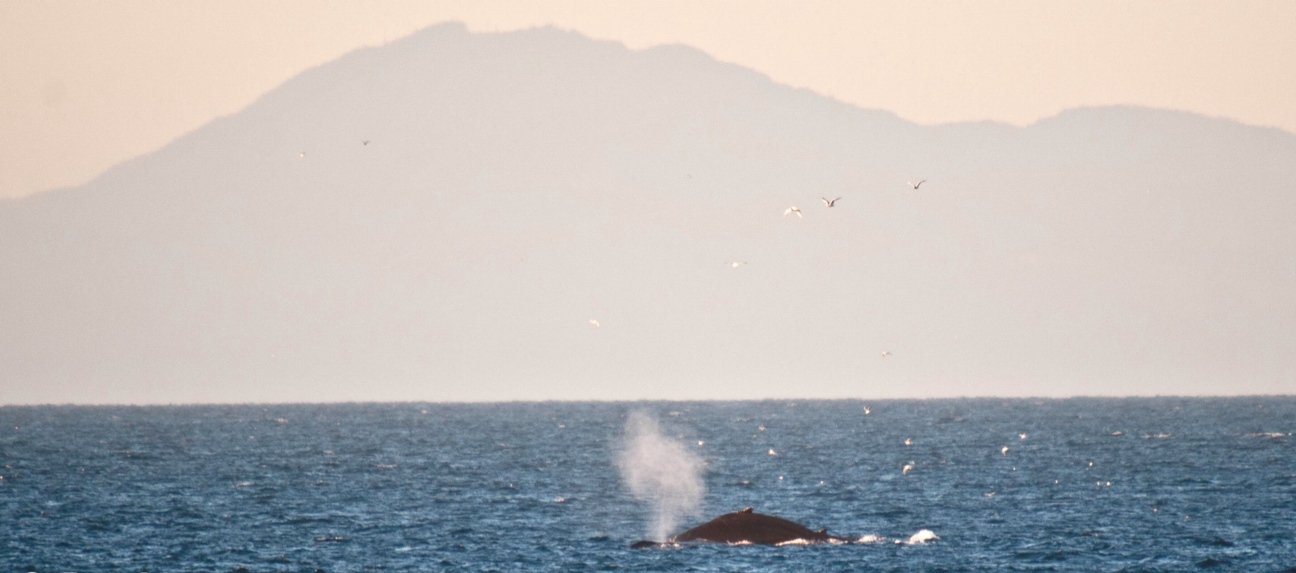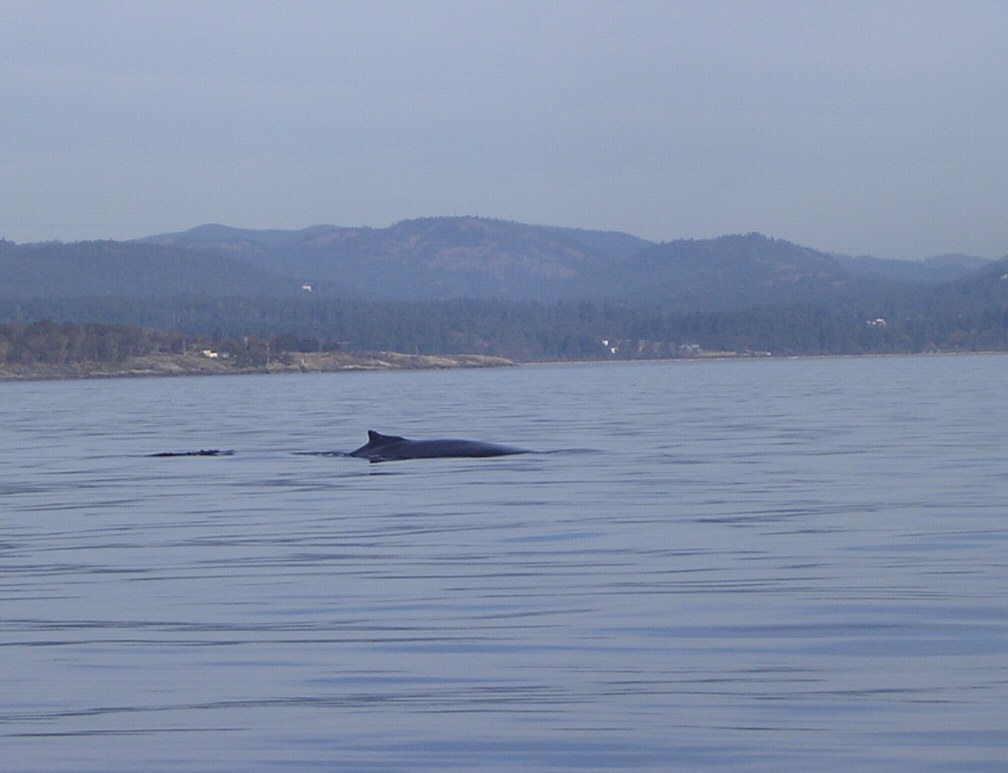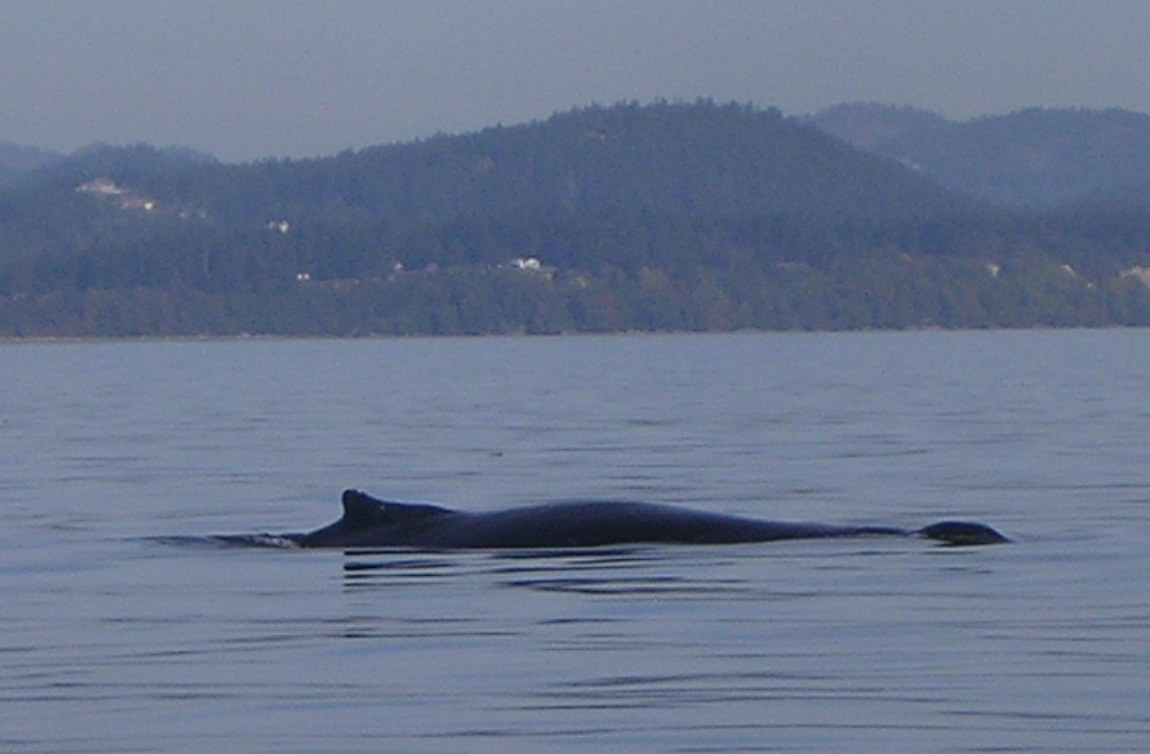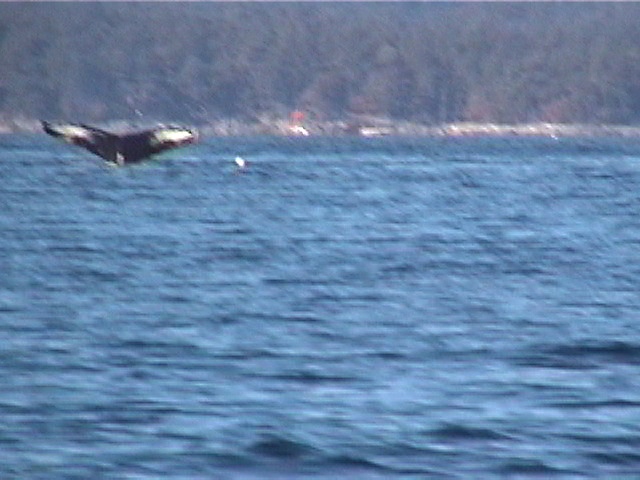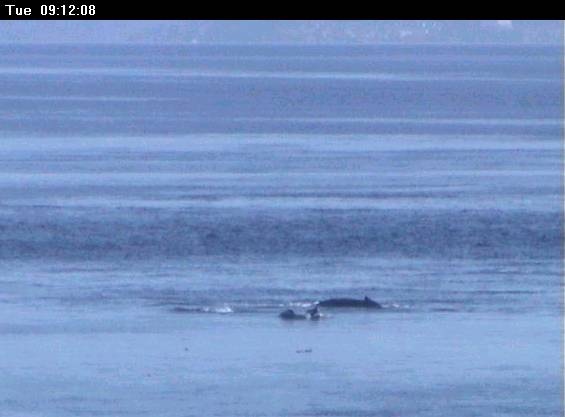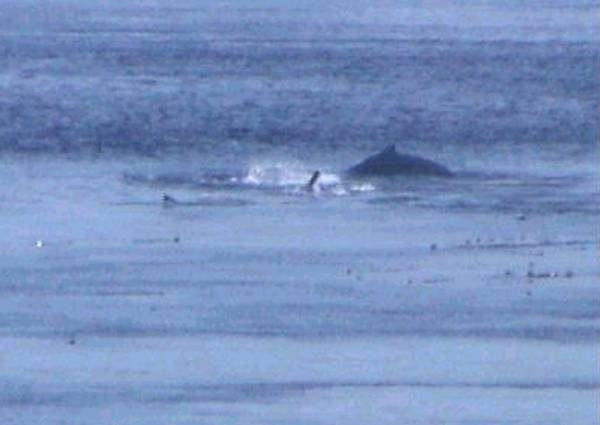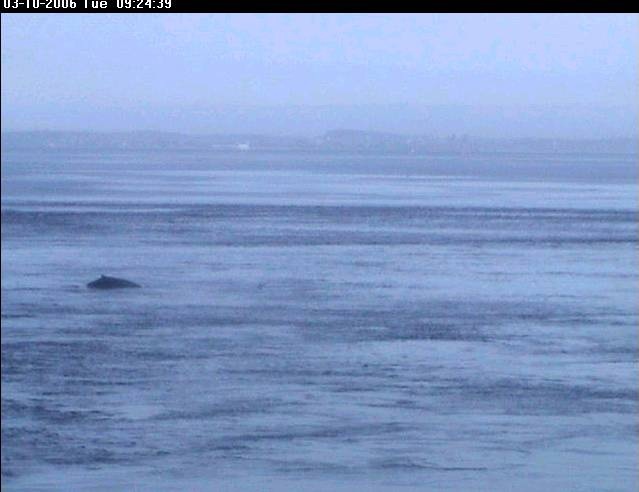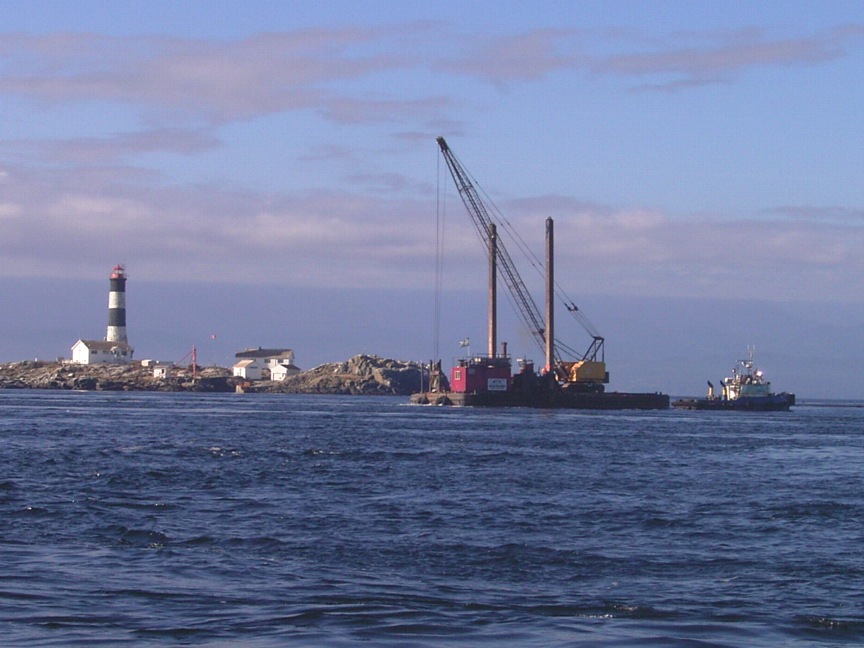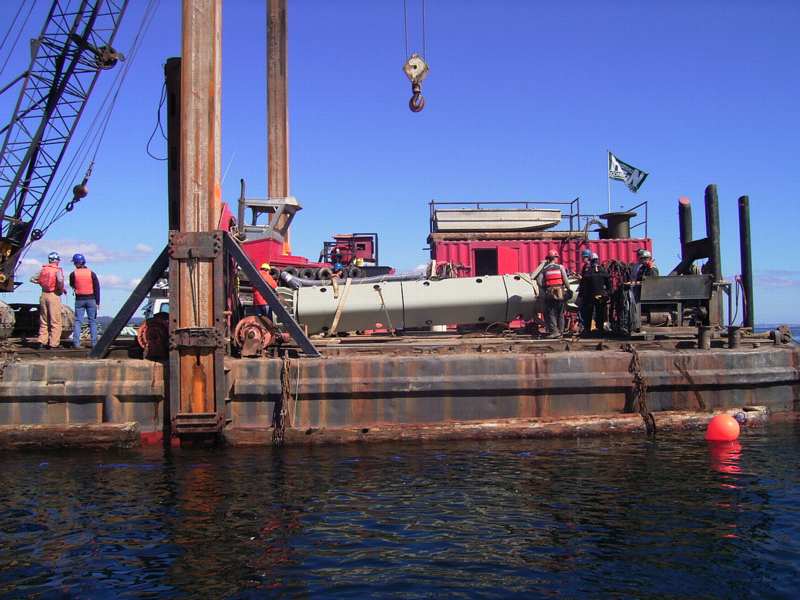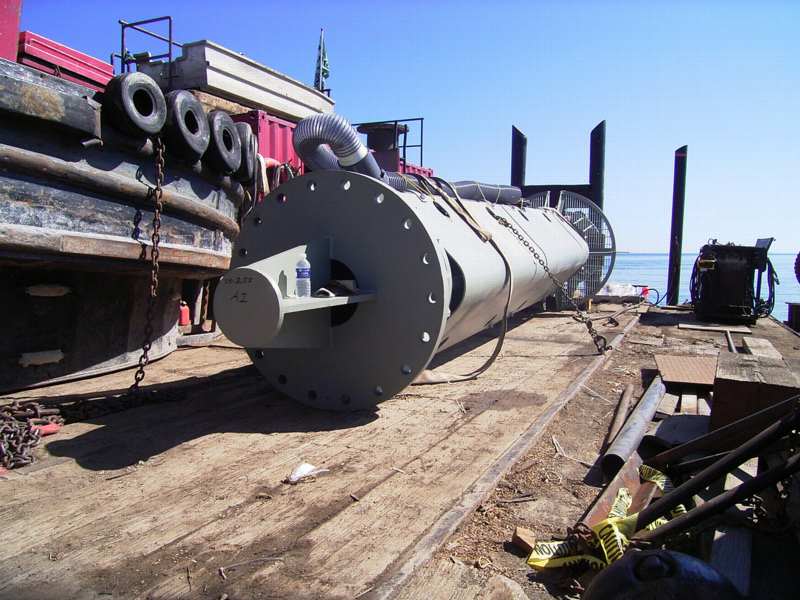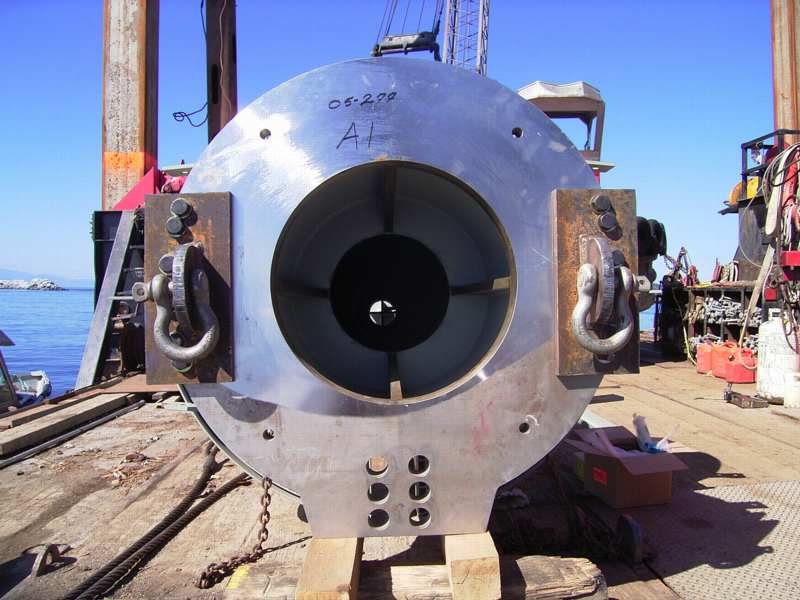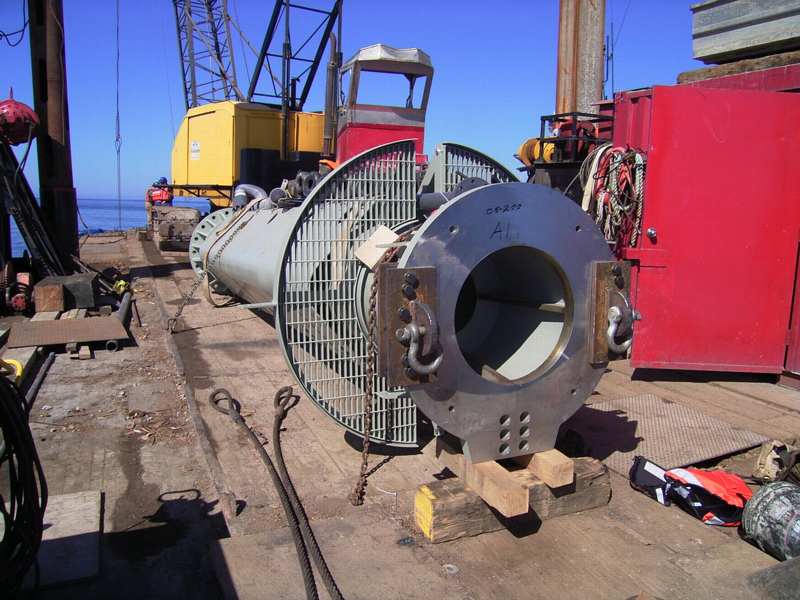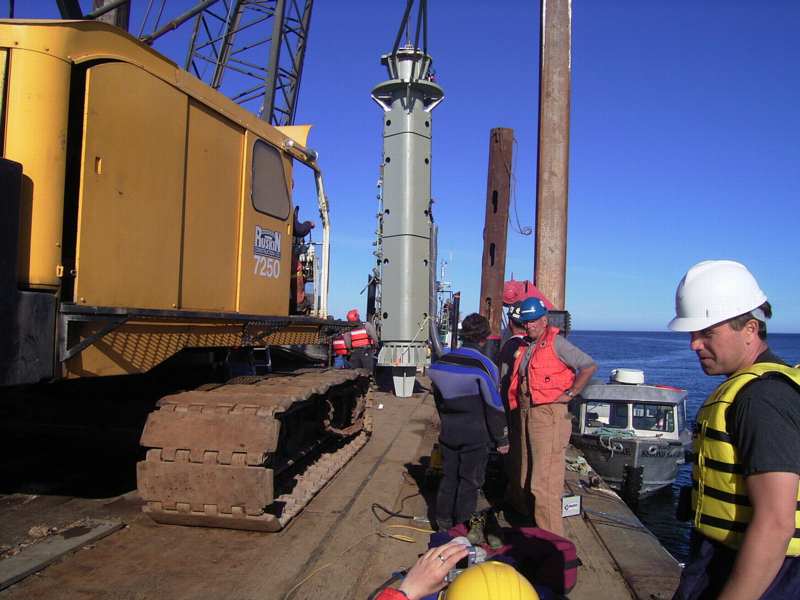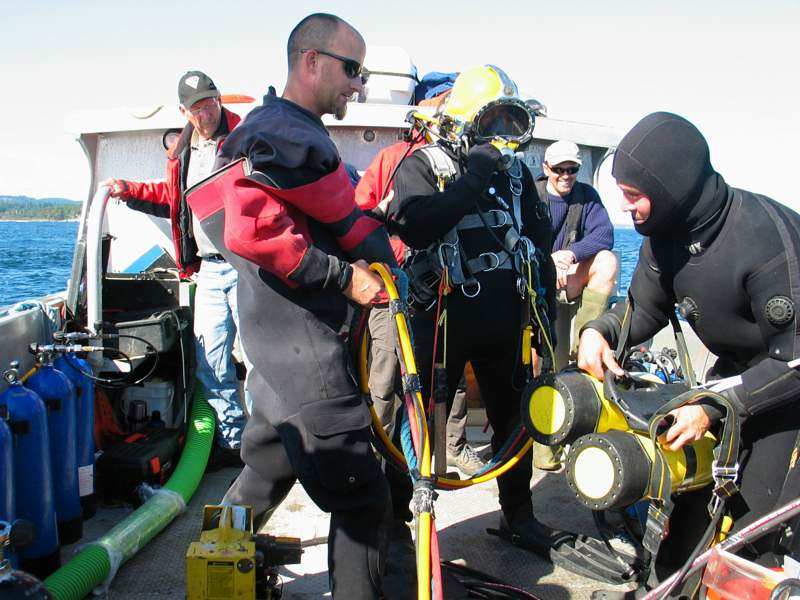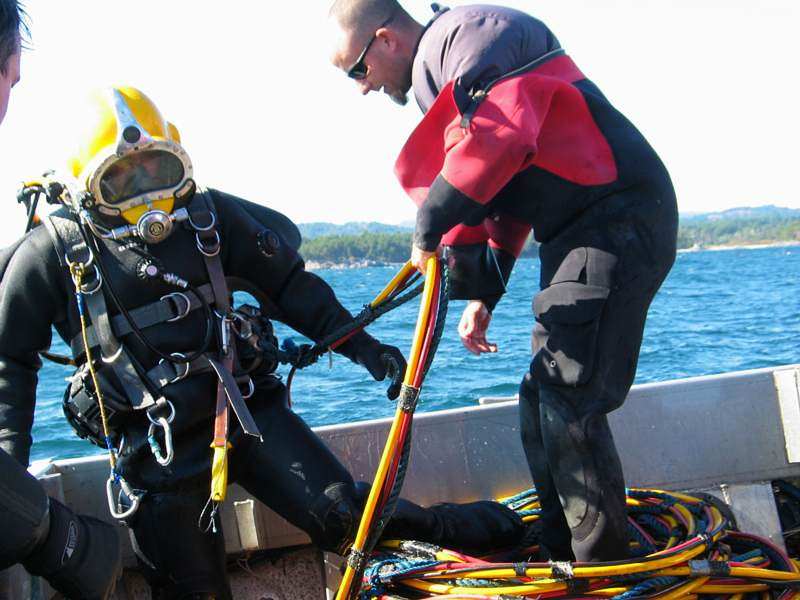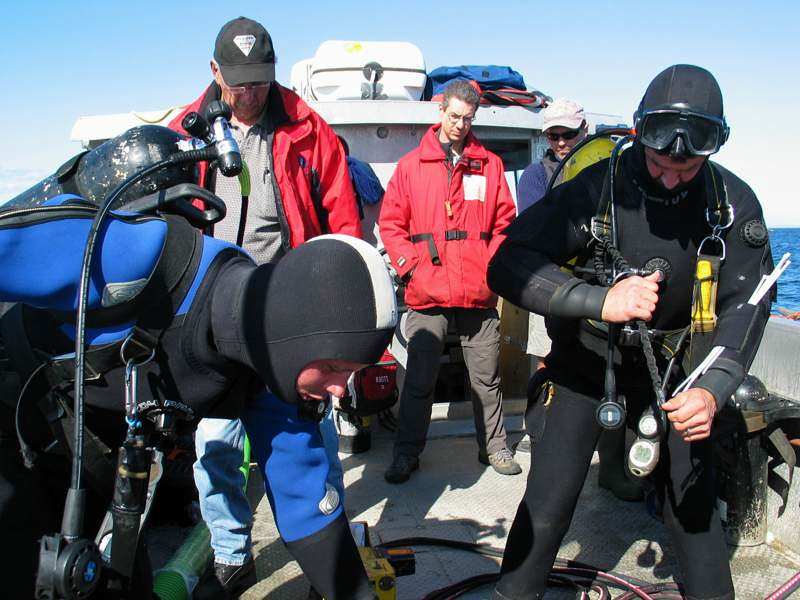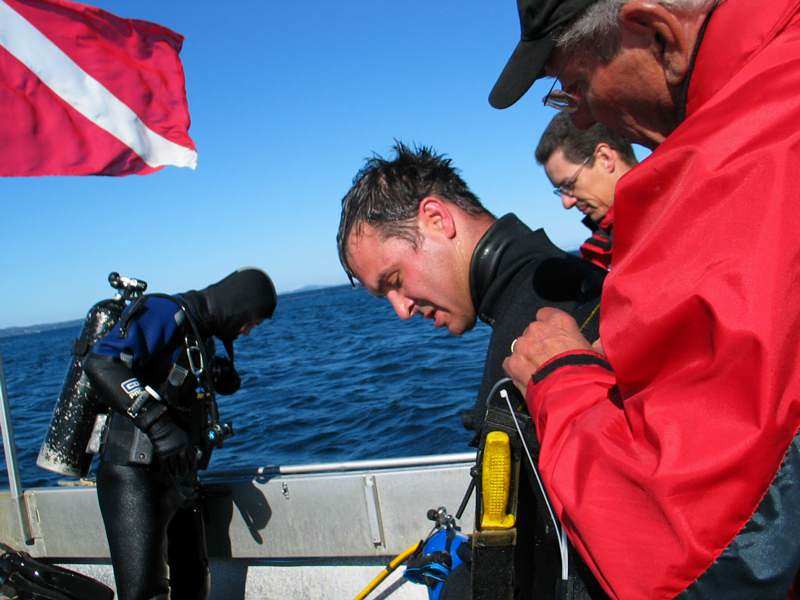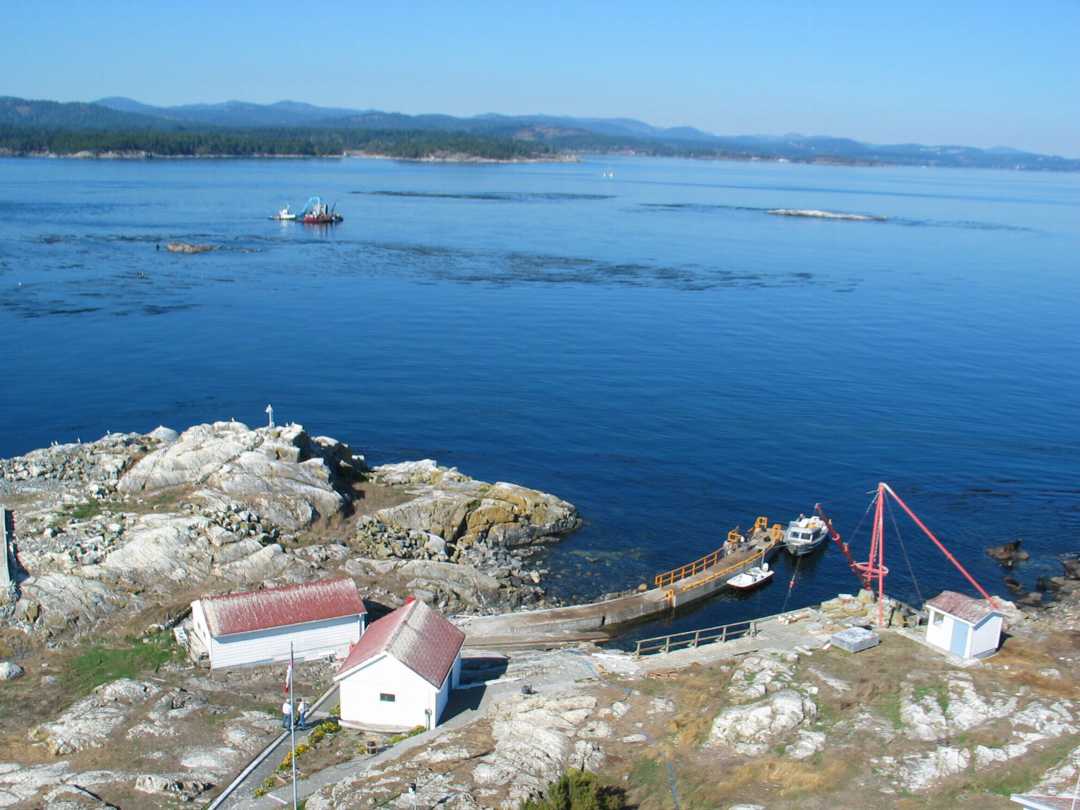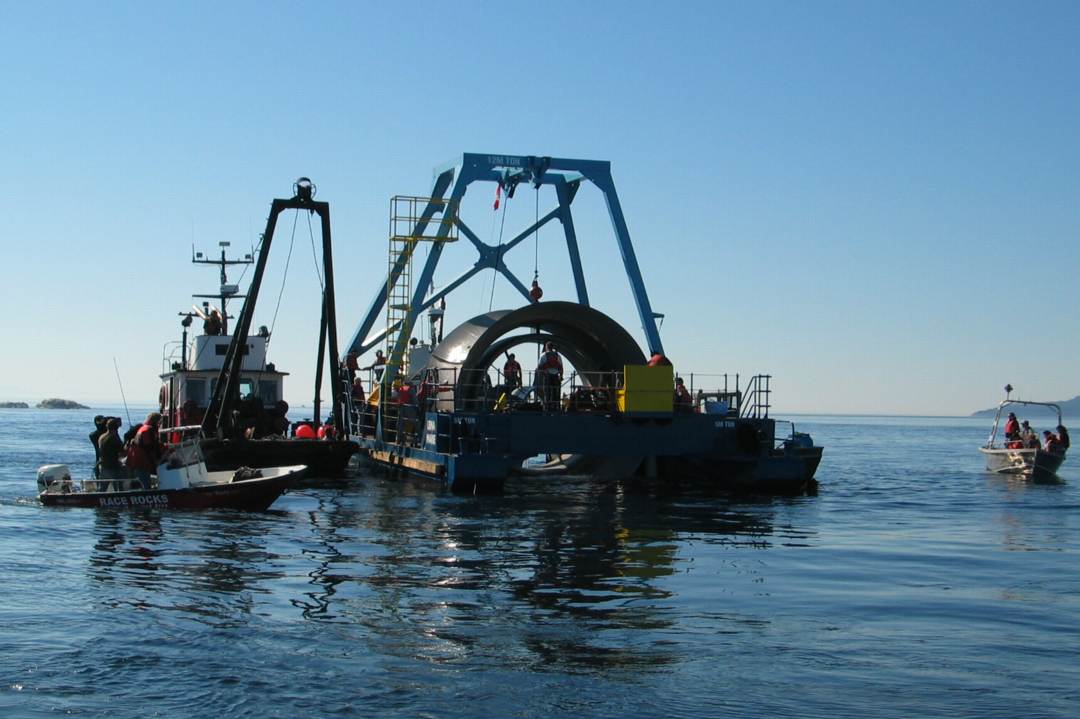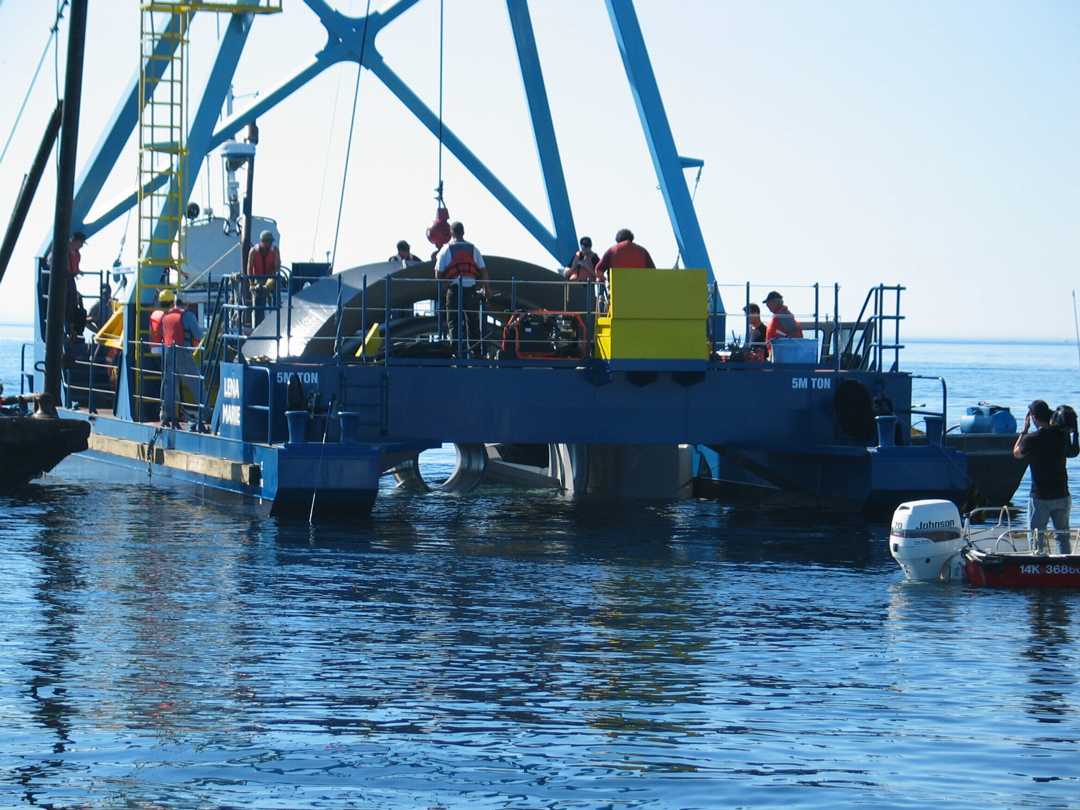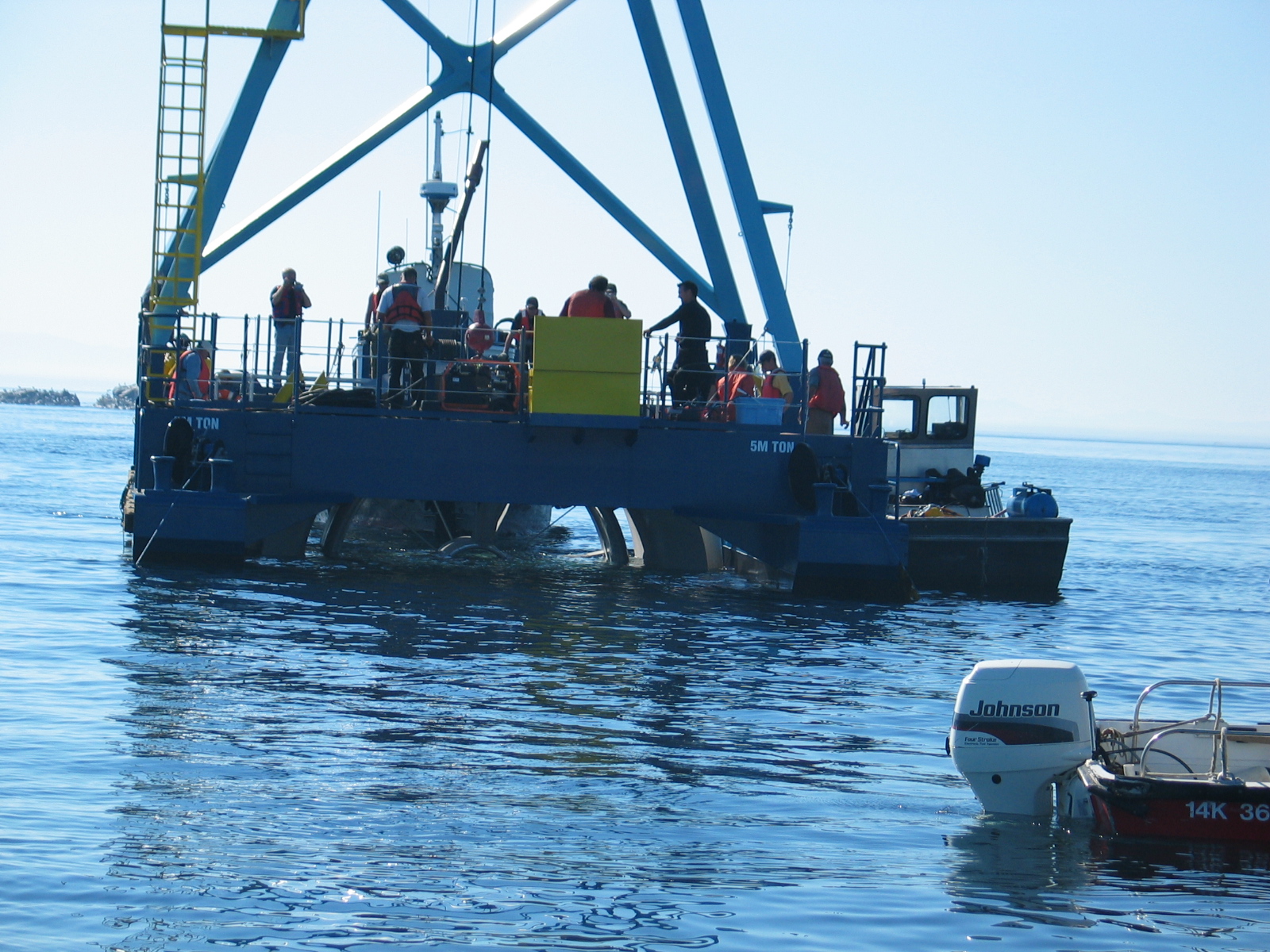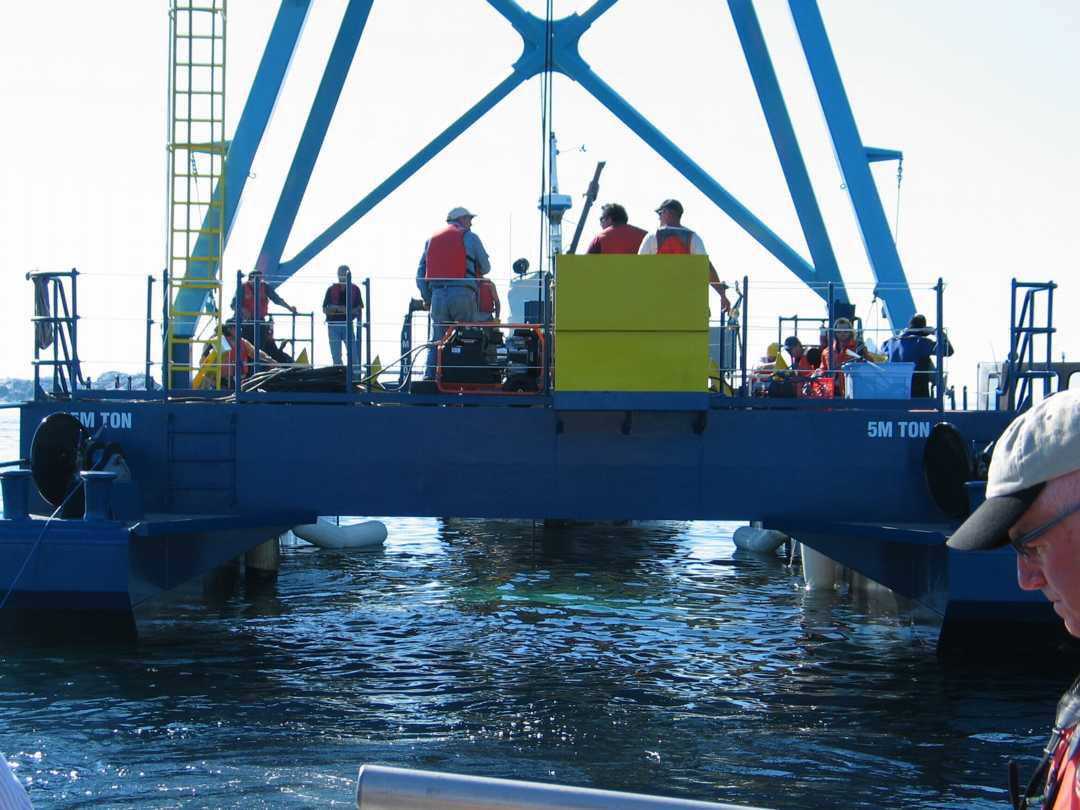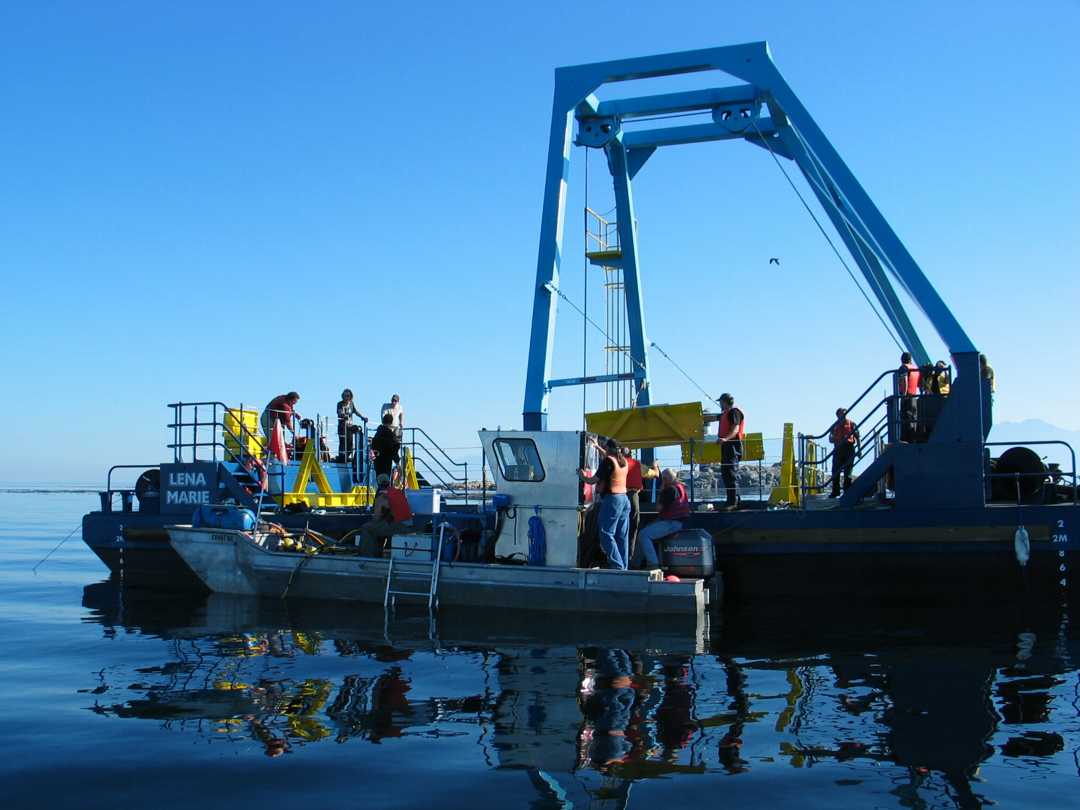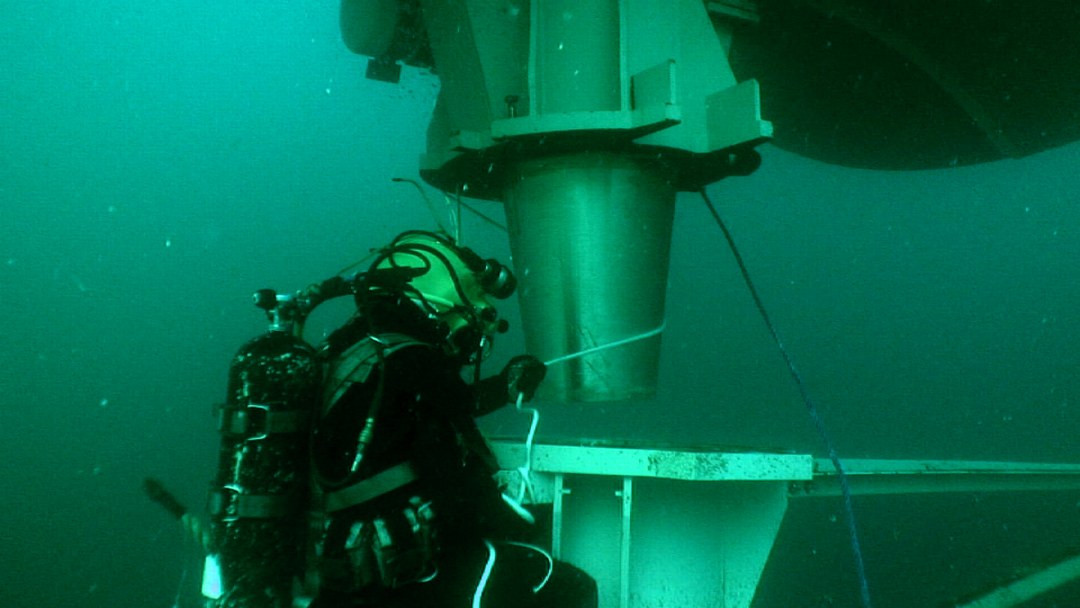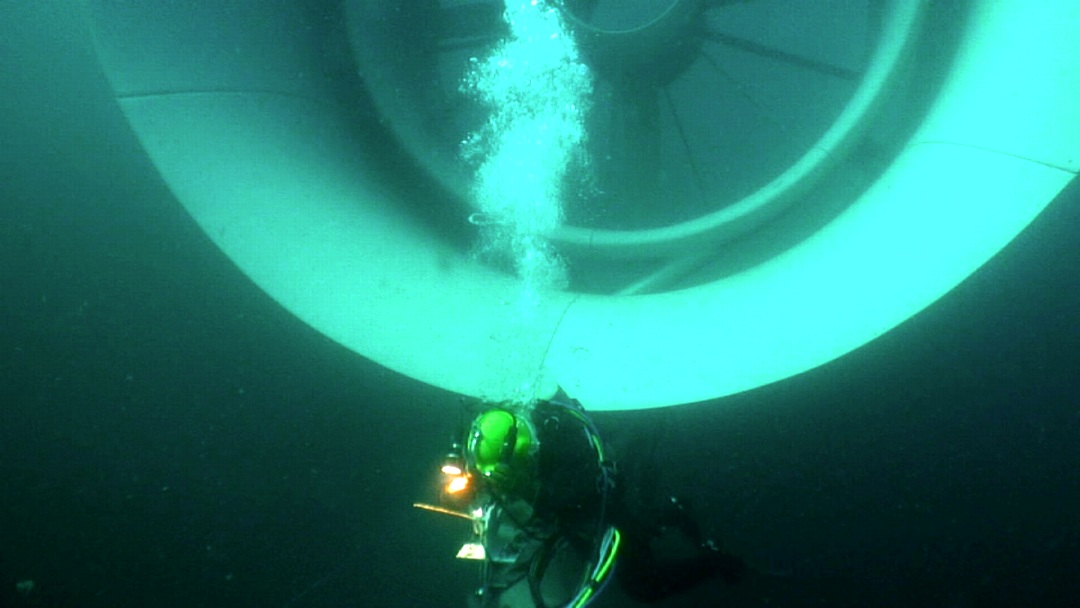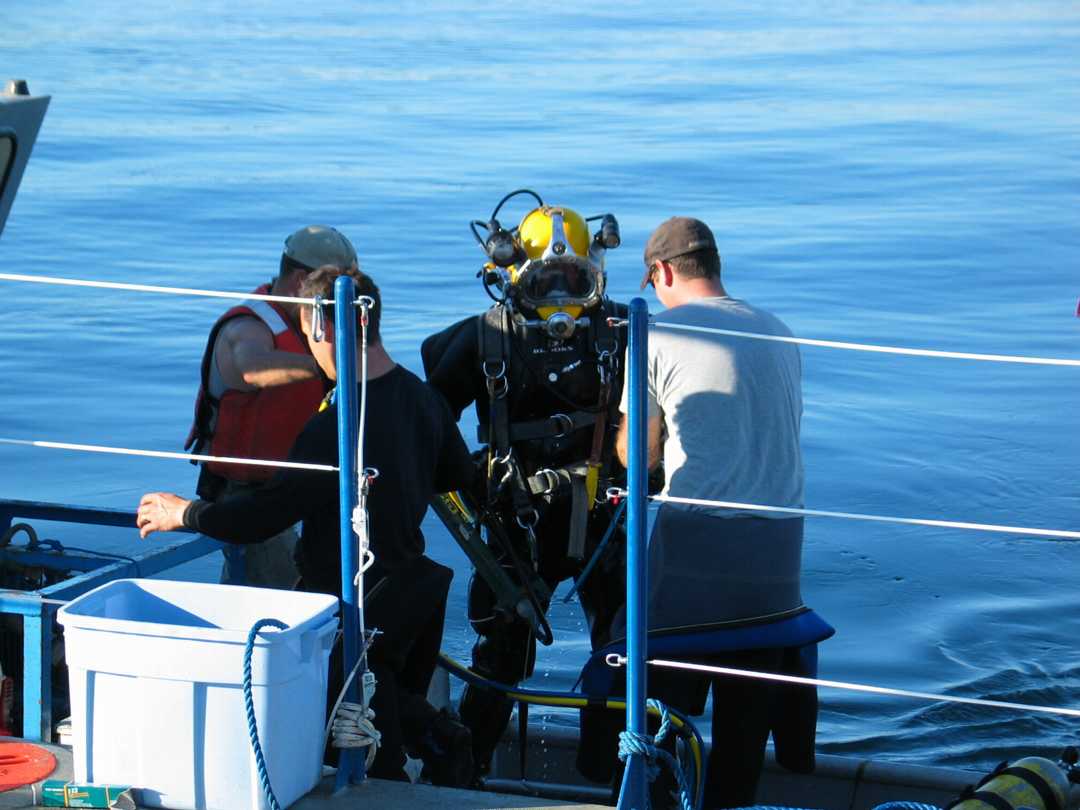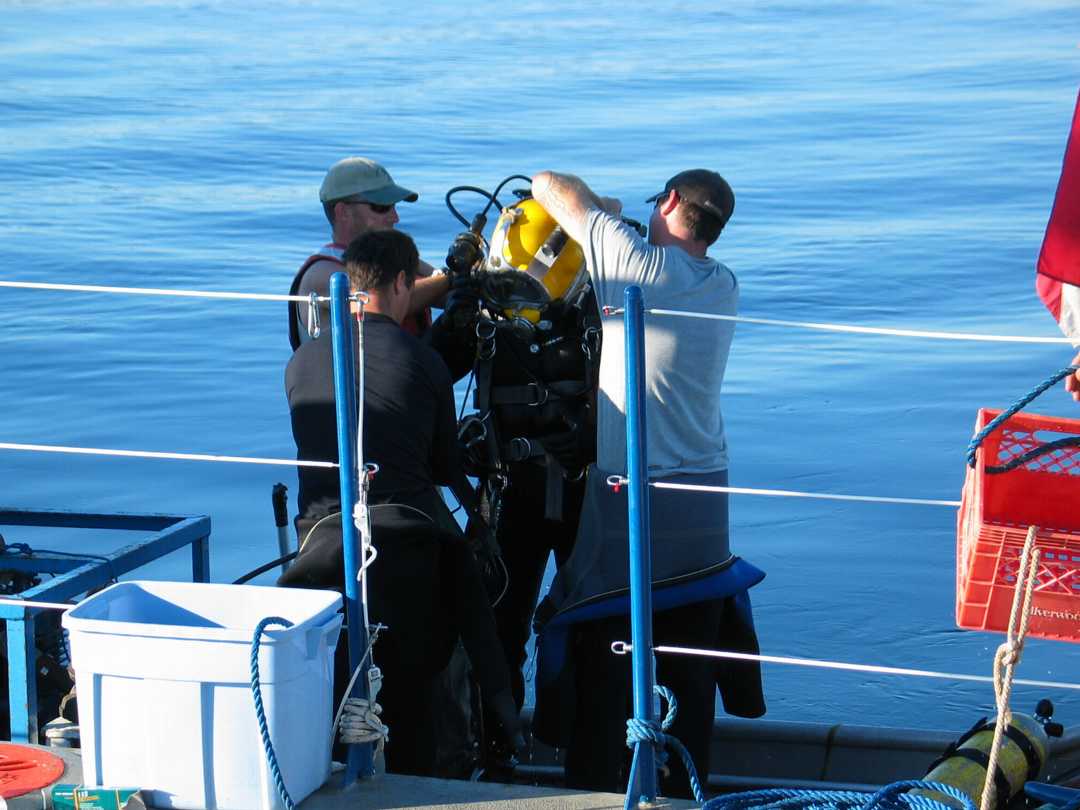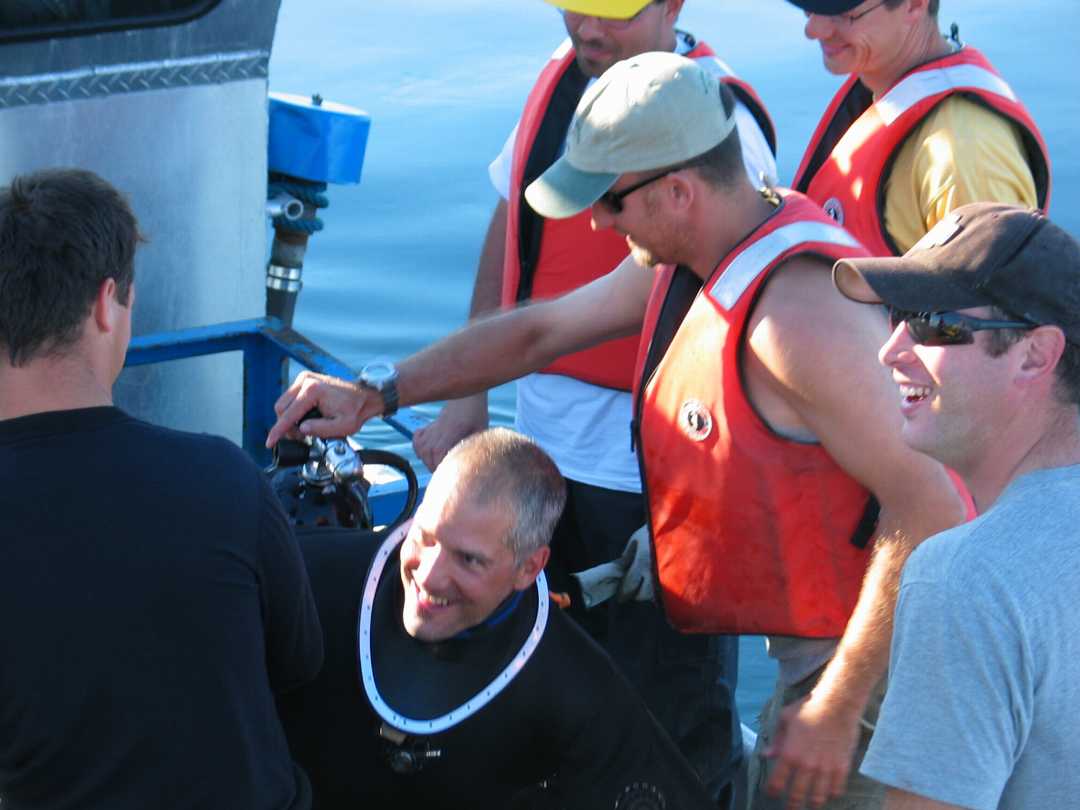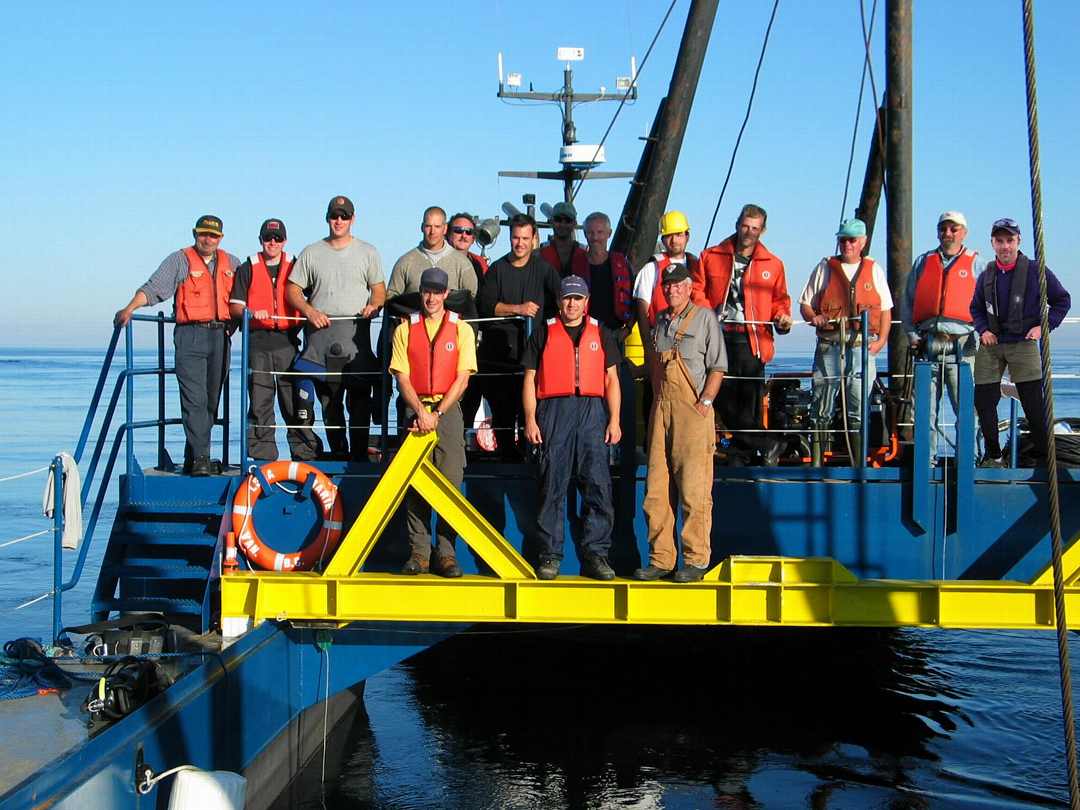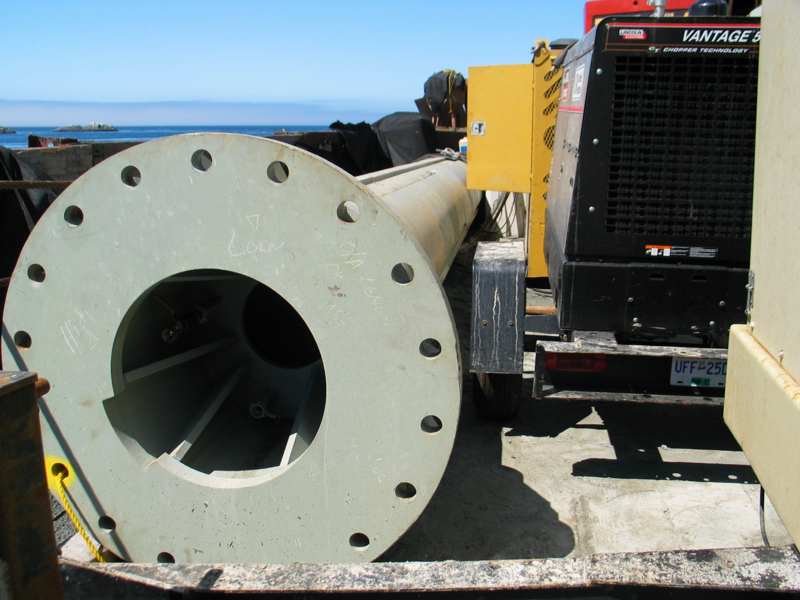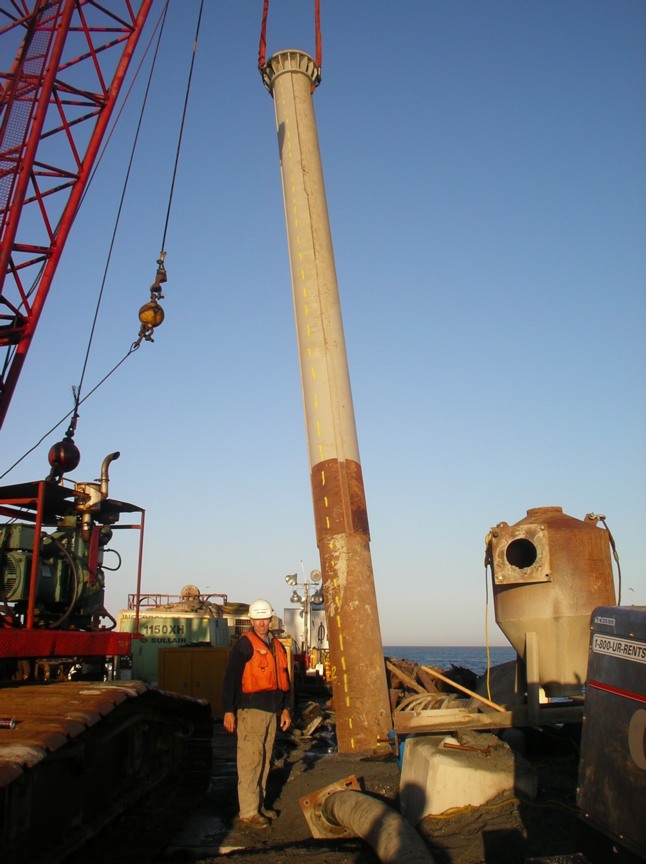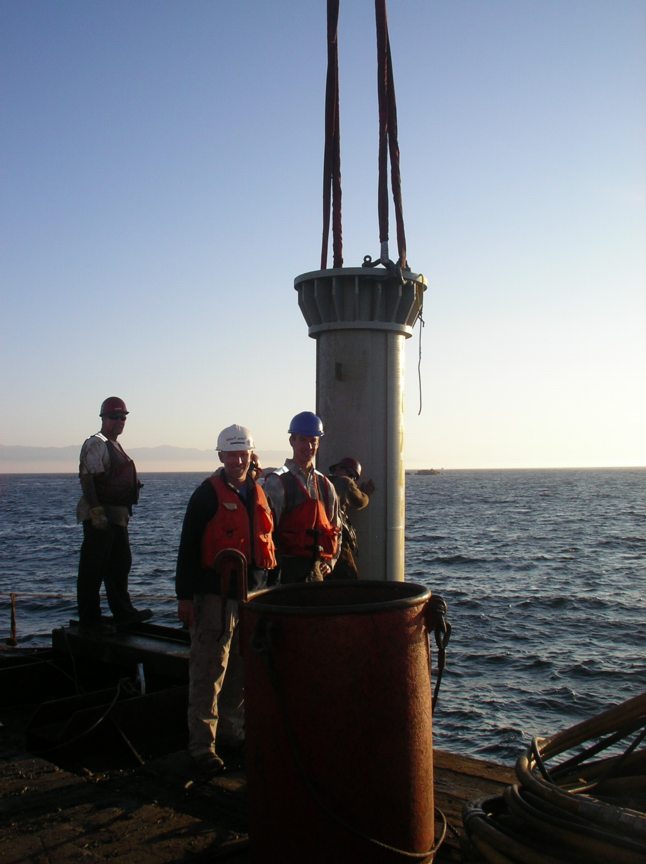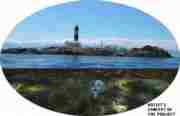| The effects of pH on the distribution of organisms at Race Rocks. Useful Links:
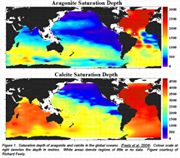 1. State of physical, biological, and selected fishery resources of Pacific Canadian marine ecosystems 1. State of physical, biological, and selected fishery resources of Pacific Canadian marine ecosystems
From Canadian Science Advisory Secretariat Research Document – 2008/013
(Page 37 of pdf file) Ocean acidification off the West Coast by Debby Ianson, Fisheries and Oceans Canada
“Global oceans are becoming more acidic due to increasing carbon dioxide (Orr et al. 2005). Much of the extra CO2 released by burning fossil fuels ends up in the oceans, increasing the dissolved inorganic carbon concentration (DIC). As DIC increases, the relative proportions of carbon species shift (specifically from the carbonate ion to the bicarbonate ion), resulting in an increase in acidity and a decrease in pH (Strum and Morgan, 1981). At present the pH of seawater has decreased by about 0.1 due to oceanic uptake of anthropogenic carbon and is projected to decrease by 0.4 by the year 2050 (Orr et al. 2005). The decrease in pH (and concurrent decrease in carbonate ion) means that organisms that produce calcite and aragonite shells or structures, such as pteropods, corals and shellfish, are threatened (The Royal Society, 2005).”
“Very few data from the carbonate system have been collected on the Canadian west coast; however these few observations show that Juan de Fuca Strait and the Vancouver Island Coastal Current experience high pCO2 water due to tidal mixing in the Strait, which brings water high in DIC and low in pH to the surface (Ianson et al. 2003). An additional study with high spatial resolution confirms the high surface pCO2 (400 — 800 ppm; Nemcek et al, in press) in this area estimated by Ianson et al. (2003) but has no complimentary measurements (such as DIC) with which to determine pH in the Strait.”
2. THE EFFECT OF HYDROGEN ION CONCENTRATION UPON THE INDUCTION OF POLARITY IN FUCUS EGGS
INCREASED HYDROGEN ION CONCENTRATION AND THE INTENSITY OF MUTUAL INDUCTIONS BY NEIGHBORING EGGS OF FUCUS FURCATUS
D. M. Whitaker
http://www.jgp.org/cgi/content/abstract/20/3/491
3. THE EFFECT OF ALKALINITY UPON MUTUAL INFLUENCES DETERMINING THE DEVELOPMENTAL AXIS IN FUCUS EGGS
D. M. WHITAKER 1 and E. W. LOWRANCE 1
1. When two eggs of Fucus furcatus develop in the dark within 0.3-4 egg diameters of each other, the point of rhizoid origin and the developmental axis are influenced by the presence of the neighbor.
2. When the pH of the medium is below approximately 7.6, the rhizoids tend to form on the sides of the eggs toward the neighbor. When it is above 7.6, they tend to form on the sides away from the neighbor, most markedly at pH 8.4.
3. The effect is stronger the closer the eggs, within the limits 0.3-4 egg diameters.
http://www.biolbull.org/cgi/content/abstract/78/3/407
4. Discovering the Effects of CO2Levels on Marine Life and Global Climate
In recent months, the media have begun to focus on another effect of rising atmospheric CO2 concentrations: the effect of increasing CO2 levels on marine life. The oceans absorb 22 million tons of carbon dioxide every day, writes Richard Feely, a scientist with the National Oceanic and Atmospheric Administration (NOAA) in a 2006 science brief, “Carbon Dioxide and Our Ocean Legacy” (100 KB PDF). Although this absorption is said to significantly reduce atmospheric greenhouse-gas levels, some scientists have observed that such an excess of CO2 may be altering the chemistry and biology of the world’s oceans.By Kate Bradshaw
http://soundwaves.usgs.gov/2007/01/
5. Dropping pH in the Oceans Causing a Rising Tide of Alarm
Tundi Agardy, Ph.D.
http://www.thew2o.net/archive_new.html?id=28
6. Researchers report on possible biological effects
of deep-sea CO2 sequestration
.http://www.mbari.org/news/news_releases/2001/oct12_seibel.html
7. Bush’s CO2 Dumping Plan Could Devastate Sea Life
http://www.scienceagogo.com/news/20031019174538data_trunc_sys.shtml
8. SEAKEEPERS PROVIDING KEY DATA ON OCEAN ACIDIFICATION AFFECT ON GLOBAL WARMING
http://www.seakeepers.org/featured-ocean-acidification.php
9. Also a general index at:
https://search.usa.gov/search?affiliate=usgswebarchive&query=ph |
 The Race Rocks taxonomy is a collaborative venture originally started with the Biology and Environmental Systems students of Lester Pearson College UWC. It now also has contributions added by Faculty, Staff, Volunteers and Observers on the remote control webcams.
The Race Rocks taxonomy is a collaborative venture originally started with the Biology and Environmental Systems students of Lester Pearson College UWC. It now also has contributions added by Faculty, Staff, Volunteers and Observers on the remote control webcams.

